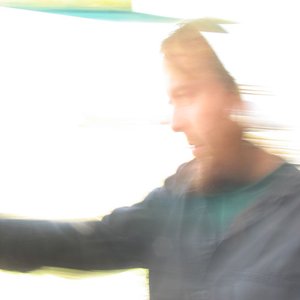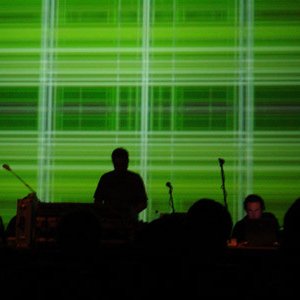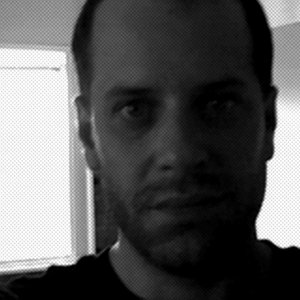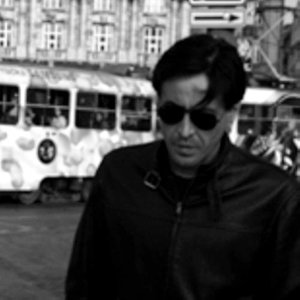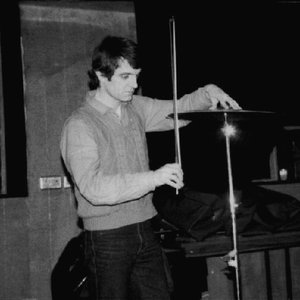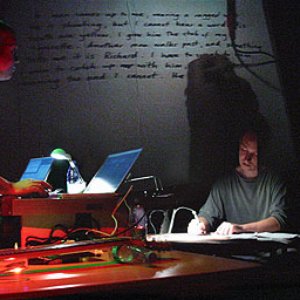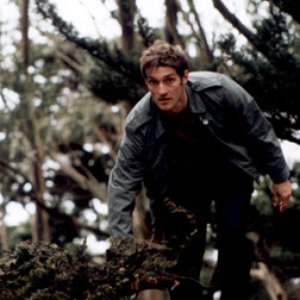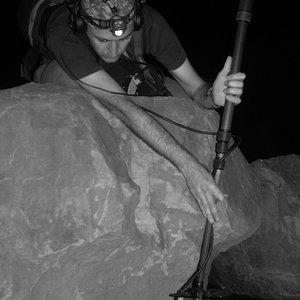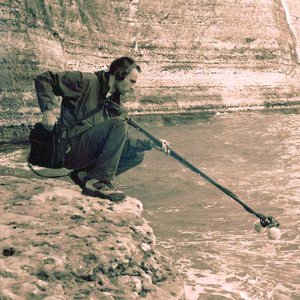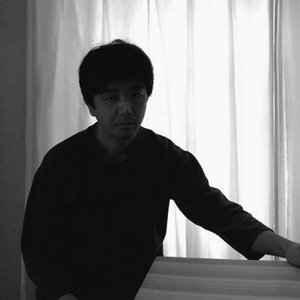Biography
-
Born
1968 (age 56)
Andrew Deutsch (b.1968) is a sound, video and graphic artist who lives in Hornell, NY and teaches Sound & Video Art in the Division of Expanded Media at Alfred University. He received his BFA in Video Art and Printmaking from Alfred University in 1990 and his MFA in Integrated Electronic Art from Rensselaer Polytechnic Institute in 1994. He is a member of the Institute for Electronic Art at Alfred University and the Pauline Oliveros Foundation Board of Advisors and is a former member of the Pauline Oliveros Foundation Board of Directors (1999 - 2001). Since 1998 Deutsch has released over 26 CDRs of solo electronic music on his Magic If Recordings a label founded in part to keep in touch with the larger landscape of experimental music and to maintain consistent networking within that community by developing relationships with other composers through an exchange of works. Magic If is the primary vehicle for Deutsch’s musical ideas with releases being developed and distributed in a very swift yet clearly considered manner. The pace at which the releases occur allows his work to inhabit contemporary culture in a way that is more productive and of lower cost than the traditional structures currently in place for the publication of sound works. Each Magic If edition showcases his experimental music and graphic art and is distributed exclusively in the United States by Anomalous Records. There have been 14 Magic If releases in since 1998 each being released in an edition of between 20 and 450 copies. In 1998 Deutsch formed Carrier Band with Peer Bode and Pauline Oliveros producing the recordings Carrier and Automatic Inscription of Speech Melody and has since collaborated with Pauline Oliveros on many other projects over the past 8 years. Deutsch is also a regular collaborator with Peer Bode and Jessie Shefrin on both sound and video projects and most recently Deutsch has collaborated with Stephen Vitiello and Tetsu Inoue on the CD Humming Bird Feed ver.02 and with Tetsu Inoue on the Cds Field Tracker and Object and Organic Code. In addition to these collaborations, his recording The First Line (Sounds for Drawing) a collaboration with Ann Hamilton, was recently exhibited at the Whitney Museum of American Art as part of the exhibition Bitsreams. This work and has also been exhibited in installation form at the Burchfield - Penny Art Center in Buffalo, New York, and at the Cornish School in Seattle,Washington. Further, an additional sixty minutes of The First Line are to be released soon by the Institute for Electronic Arts. Deutsch has released other CDs through Deep Listening Publications, Lucky Kitchen, Anomalous Records, Commune Disc (forthcoming), Elevator Bath (forthcoming) and JdK publications. Additionally, since 1994 Deutsch has produced over 26 recordings of experimental video many of which have been exhibited both nationally and internationally and he has participated regularly in the Artists Residency program at the Experimental Television Center in Owego New York. Approaching video from a position of experimentation, he has developed his own real time raster scan processing system based on a similar design by Nam June Paik. Deutsch used in this system in his 1996 recording Magnetic North, produced in part while he was a workshop instructor and facilities consultant at the Tariagsuk Video Center, Igloolik, Canada and in his collaborative piece Empty Words 4 with John Cage and Yvar Mikshoff which has been accepted into the limited archives of the John Cage Trust. His most recent video project Eye Piece, which incorporates hand rendered 16 mm film components, was exhibited at the 9th Biennial of the Moving Image, Center pour L'image, Contemporaine Saint - Gervais, Geneva. Deutsch is the recipient of an Artists Fellowship - in Video Art (1997) from the New York Foundation for the Arts and a Special Opportunity Stipend from the New York Foundation for the Arts (1999), and you can hear remixes of Deutsch’s CD Garden Music on Oval’s OvalProcess, and Microstoria’s Improvisers.
Artists Statement
Early in the development of my work with electronics, I found myself intuitively drawn to an approach to video/sound art called “real time processing” and my interest in that technique has continued to this day. To work in real time means to work live processing the video image or sound directly, manipulating the signal itself as it moves in time. This way of working is heuristic and physical, I work with the image/sound the same way a sculptor might work wood on a lathe, I carver away the signal enhancing different aspects of the image/sound as my intuition leads. This physical approach to processing is extremely engaging and leads to all manners of combinations and qualities I could not think of in advanced of the work. My experience with real time processing began with the earliest of processing tools, Dan Sandine’s Sandine Image Processor, Nam June Paik’s Wobbulator, and David Jones’ Design Lab Frame Buffer along with various other hand made analog tools. For the most part, these early video tools were designed specifically for real time image processing, this is do in part not only to the technical limitations of their time, but also because tool designers reflected in their design issues that were then at hand in culture. These issues included theories of cybernetics, structuralism, reception theory, machine vision, information theory, and media literacy while at the same time embracing the possibilities of performance art and emphasizing the de-materialization of the art object. I believe these issues remain embedded within the design of early video tools, and to work with these tools means, in many ways, to continue to develop those understandings. It is for this reason that I have been deeply immersed in the history of video art and have developed research practices that continue to uncover new theoretical possibilities. I'm also deeply involved with electroacoustic music which combines acoustic sounds with electronic processing or synthesis. These combinations can occur in a live context or in the studio. Electroacoustic music has a long and highly developed history. Beginning with the early works of Pierre Schafer and extending through the works of Karlhienz Stockhausen, John Cage, and contemporary artists such as Oval, Tetsu Inoue, Pauline Oliveros, and the Deep Listening Band I have followed and researched closely the various means and methods employed in electroacoustic music production. This research comprises the base of my understanding sonic arts and has lead me to all manner of traditions and possibilities. Graphic notation, improvisation, Free Jazz energy structures, atmospherics, process music, ambient music, intuitive music, systemic minimalism, deep listening, granular synthesis, and especially an interest in the sensual nature of sound form the foundation for my electronic sound works. As a soloist and in collaborative works with Pauline Oliveros and Peer Bode, sounds are launched into digital processing environments where they are sampled, delayed, filtered, looped, amplified, layered and mixed in real time generating varied sonic textures. I have called this method of improvisation “real time collage” and it, like my work in video, continues to expand as the tools and processes available also develop. Using the “real time collage” improvisational technique, I have performed live events at the Knitting Factory, Hallwalls Contemporary Arts Center, Syracuse University, Oberlin Conservatory, Alfred University, and at smaller more informal venues such as coffee shops where the audience is invited to participate in the performance. Very recently I have been engaged in several concerts with Pauline Oliveros, Peer Bode, and Dick Robinson where metaphorical text and digital/analog processors are combined in notation free sound performances inspired by the work of electronic instrument inventor Harald Bode. Two of these performances have been recorded and are documented on the CDs Carrier and Automatic Inscription of Speech Melody. Most recently, I have completed work on a cd Zerbrochen Bewegung, which explores the possibilities of electro-mechanical loops, digital sound processing and microscopic editing which have been released by Cabinet magazine as part of the free cd insert in issue # 7, Summer, 2002. Zerbrochen Bewegung is a series of sound works constructed using broken music boxes, ring modulators and frequency shifters. My interest in these works first developed out of early experiments with analog and digital tape loops and later extended into music boxes. Music boxes are mechanical loops set into motion via spring compression and consequently have the character of “winding down” as they play. This compositional unfolding is most delightful as it destroys the often “gebrauchsmusik” quality of music box melodies. To further destroy this “music of the home” I explored the possibilities of working exclusively with broken music boxes as their melodic structures would be “readymade destroyed”. Further, they often squeaked, squabbled, and burped as they played. Additional deconstructions were performed with electronics. I have made hundreds of these little compositions, they just sit around on my hard drive waiting for a chance to play.
Artist descriptions on Last.fm are editable by everyone. Feel free to contribute!
All user-contributed text on this page is available under the Creative Commons Attribution-ShareAlike License; additional terms may apply.

